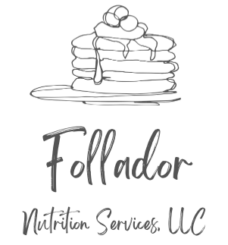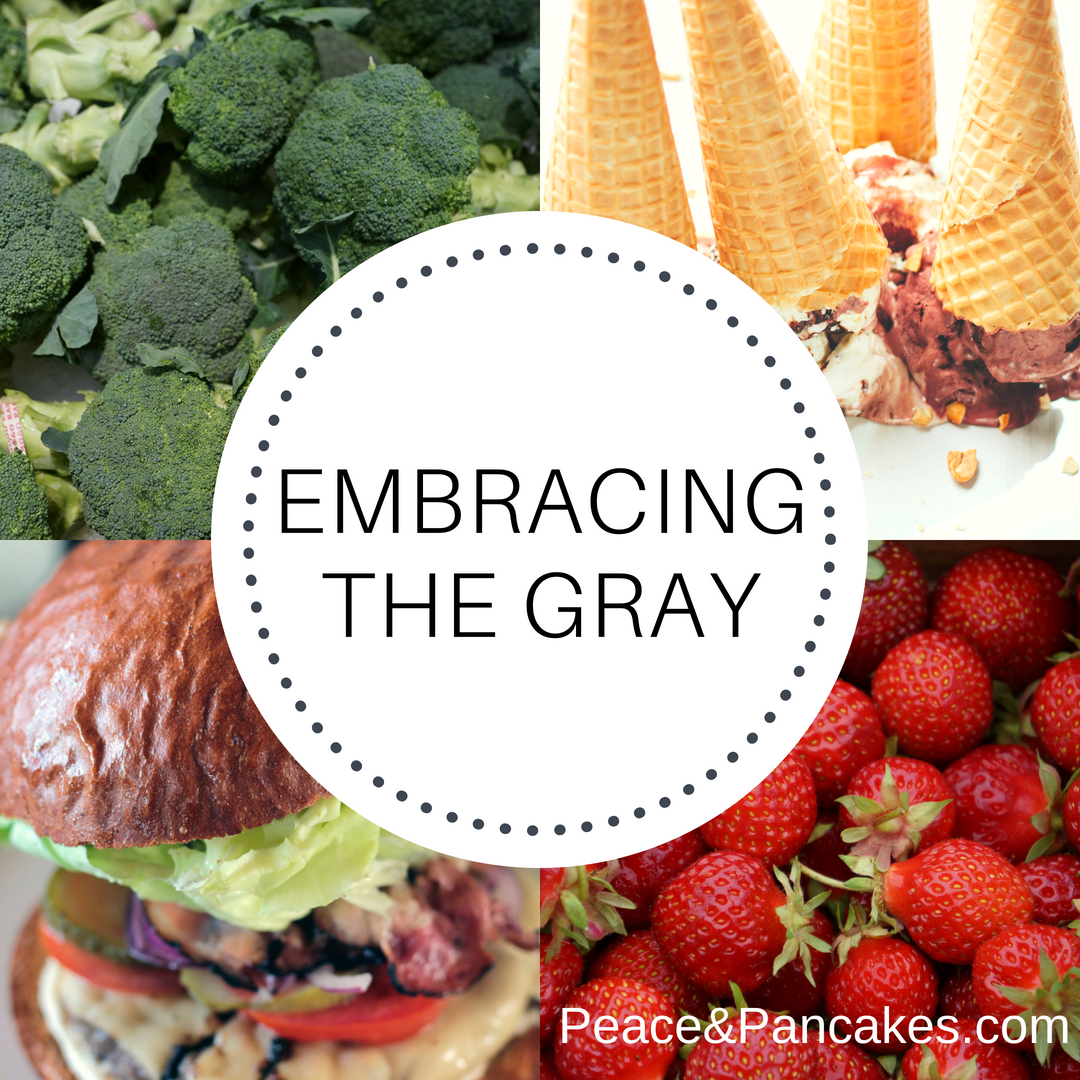Nutrition is a topic in which it’s easy to fall into dichotomous thinking (i.e. — seeing things as “black & white”), and the gray area is often lost in today’s world of information overload. While I could compile a lengthy list of examples, two of the most popular dichotomous nutrition statements that I hear/read as a dietitian are:
- Sugar is bad — I need to eat less.
- Protein is good — I need to eat more.
Before nodding your head in agreement, let’s take a closer look at each of these statements and see if they ring true.
Sugar is bad — I need to eat less.
To start, sugar is a broad term that could mean a lot of different things. When people think of sugar, they usually think of white crystalline table sugar. Absolutely, that is sugar. Absolutely, added sugar is something to limit in the diet (to be specific: 6 teaspoons per day for women and 9 teaspoons per day for men). After all, it only provides energy and no other beneficial nutrients like the vitamins and minerals found in fruits and vegetables.
However, there are a lot of other ways sugar can show up in the diet:
- As fructose in fruit, vegetables, & nuts, which is packaged with beneficial fiber, vitamins, & minerals.
- As glucose in whole grains, legumes, and starchy vegetables, which is packaged with beneficial fiber, vitamins, & minerals.
- As lactose in milk, yogurt, and other dairy products, which is packaged with protein, calcium, potassium, phosphorus, magnesium, and vitamin D.
Sugars like glucose, fructose, and lactose are only as good as how they come packaged. The fructose found in soda in the form of high-fructose corn syrup is obviously not your best bet…but the fructose found in an apple or a handful of almonds? It’s just one component of a nutritious food!
Additionally, some people actually need quick energy in the form of sugar:
- Athletes: Carbohydrates are the key macronutrient for athletes before, during, and after a workout. Blood sugar (glucose) is the main fuel for body cells during exercise. Quickly digested and metabolized carbohydrates are the best forms to prepare for, sustain and re-fuel exercise. While the average human doesn’t need to be consuming sports drinks (like Gatorade), sugary gels (like GU), or energy bites, these are actually preferred options for athletes, especially during a very long exercise session.
- Diabetic hypoglycemic episode: In order to bring blood sugar back to a safe level, people with diabetes who are experiencing hypoglycemia need quick sources of blood sugar, such as fruit juice, glucose tablets, or even candy. Foods like whole grains or whole fruits contain fiber, which slows down the digestion of the carbohydrates and thus doesn’t raise blood sugar quickly enough in cases of hypoglycemia. Hypoglycemia could lead to shock, coma, or even death if left untreated.
Finally, at least in my experience, sugar is often accompanied with love: the cookies that I made my friend for her birthday, the ice cream that I shared with my mom during a fun night out, the cake that I ate at my best friend’s wedding. Should we refuse the treats that accompany celebration and bonding? We absolutely can!
…but I won’t be anytime soon.
Protein is good — I need to eat more.
Yes, protein is an important component of a balanced diet. It’s pivotal for maintaining/gaining muscle mass, makes up the structure of organs, is needed to produce hormones and neurotransmitters, helps keep blood sugar levels stable, and helps promote satiety. However, more isn’t always better.
To start, protein needs will vary based on age, gender, activity level, and body weight. The average adult only needs 0.8 g/kg/day according to the Recommended Dietary Allowance (RDA). For a 150 pound person, this is 60 grams per day. However, research is showing that older adults need more like 1-1.2 g/kg/day to prevent muscle loss. Additionally, endurance athletes need 1.2-1.4 g/kg/day, and the range is 1.4-2 g/kg/day for strength training (read more here). Protein needs can also be based on the percentage of calories (the AMDR recommends that protein makes up anywhere from 10-25% of daily calories).
Just like the other macronutrients (fats and carbohydrates), the body can only use so much protein at one time (some research shows the body can only use 20-30 grams at one time for muscle synthesis, but the consensus is not set on this yet). Once the body has exceeded its capacity to metabolize and use protein, it simply turns the protein into fat and stores it. The nitrogen found in protein is excreted in the urine in the form of urea.
Because the kidneys must excrete the nitrogen produced from the catabolism of protein, people with kidney disease sometimes must follow a low-protein diet. There are certain other disease states, such as liver disease, where protein also may also need to be limited.
On the other hand, as stated above, some people do indeed have higher protein needs. Obviously, someone with high energy needs, such as an athlete, will need to consume more protein. Some disease states and conditions also require higher protein intake, including metastatic cancer or severe burns.
No matter your protein needs, similar to sugar, the benefits of protein also depend on how it is packaged. Protein is found in a variety of foods, including meat, poultry, fish, legumes, nuts, seeds, and dairy products. A lot of research shows that dietary patterns that emphasize plant proteins are far more beneficial than those that emphasize animal proteins. The protein in legumes is packaged with beneficial nutrients like fiber, vitamins, and minerals. Meanwhile, the protein found in bacon is packaged with saturated fat and sodium, which are both nutrients the Dietary Guidelines for Americans recommends limiting.
Can we still eat animal sources of protein? Yes! It’s the dietary pattern overall that matters. A steak once a month isn’t going to be the end of health if the overall diet is nutritious.
Can we completely cut animal protein out of our diet if we want to? Also yes! Special attention needs to be paid to getting enough of certain nutrients, but it’s entirely possible to thrive on a 100% plant-based diet!
So, did this change your thinking at all, or were you already embracing the gray? Either way, I hope you are more critical about “black and white” nutrition statements.
What are some other dichotomous nutrition statements you hear or believe? Comment below!


When I first saw the title of this article, I thought it said “embracing the CRAY,”
And I was like omg this article is for me!! ???. Still loved it though…breaking free of that dichotomous thinking around food can be so hard when we are constantly being told to fear entire food groups. Thanks for posting!
Haha “embracing the cray” would be a fabulous article! Yes, breaking free of that dichotomous thinking around food is a daily battle for a lot of people. I’m glad the post resonated with you! Thanks for your feedback! 🙂